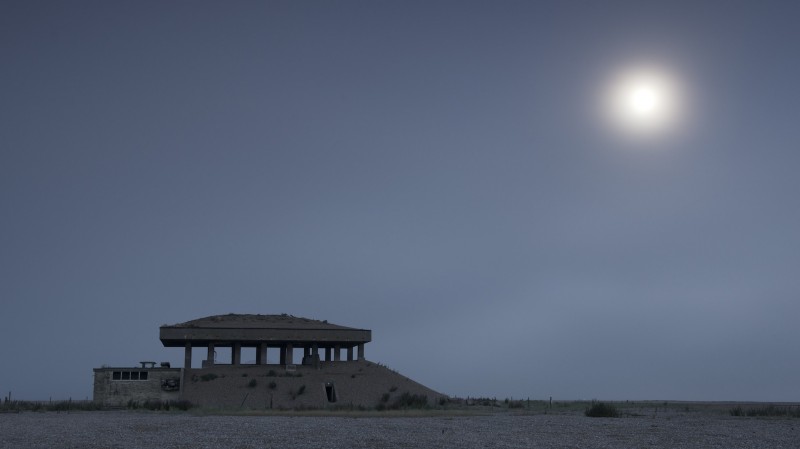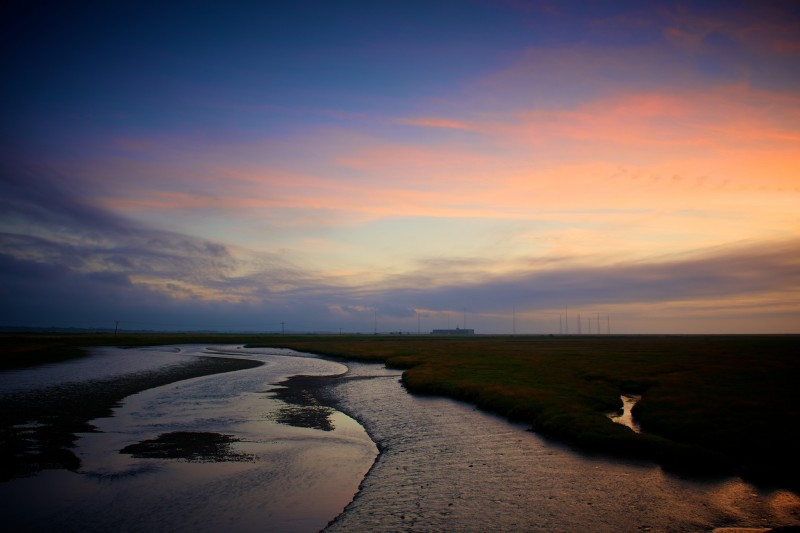Orford Ness is a strange place indeed. It’s history is shrouded in mystery, from secret military tests at the hands of the AWRE to covert experiments in radio and radar. It’s also an important wildlife habitat and potentially covered with unexploded ordnance, something which the National Trust are keen to point out as new guardians of the historic site. We’re here to learn a little more about this amazing place, drink in the eerie twilight, and for once stick to the footpaths.

Although the Ness is accessible to all via a regular passenger ferry from Orford, we eschewed the day-trippers and booked ourselves into the bunkhouse of a former research base. It’s a package offered by the National Trust, whose rangers met us one evening at the ferry and took us on an open-topped jeep ride to our accommodation. Having dropped our overnight gear and provisions at base, we were back on the truck in minutes and heading into the Ness proper – a huge shingle spit interspersed with foreboding structures and assorted military detritus.
First stop on the magical mystery tour was a narrow bridge across some dried-up marshland, with a big sinister carbuncle on the horizon. This is Cobra Mist, originally a wartime radar research facility and presently being used by Dutch commercial radio. Our two drivers / rangers / guides were keen to share as much information as they possessed, though it became quickly obvious that most of the this facility’s secrets were lost with the generations that lived and worked here.

All of the military buildings on the Ness are resigned to a state of controlled decay, whereby most of them are boarded up and none of them maintained. Quite what that means for the few which are still accessible is anybody’s guess in an age of health and safety, something which made us appreciate our time here even more.
The most interesting structures were of course the Pagodas; partially buried single room buildings topped with a shingle-filled roof supported by concrete pillars. It’s believed that this is where various bombs were tested to make sure they’d operate as expected at extremes of temperature and vibration, with the shingle roof forming a natural ‘plug’ in case something went wrong. We spent several hours photographing the two Pagodas from practically every angle, accompanied by the chorus of seabirds who now call the Ness their home.
Once the last of the useable light had been exhausted we were driven back to base where we set about preparing dinner in the massive kitchen. More wine followed the bottle that may or may not have been already consumed while taking pictures, and a good time was had by all until the all-too-soon alarm call woke us for our dawn assault.
The second day on the Ness passed much like the previous evening; more seabirds, more crazy light, more delicious dereliction. Because I can’t leave these things alone I asked one of the rangers whether there was really unexploded ordnance lying around, or whether they just preferred people to stick to the path so that nobody falls over and sues the NT hurts themselves. The individual I spoke to conceded that there was an element of safety involved, but also pointed out that shingle doesn’t re-settle in the same way that sand does, and that any footprints would therefore have to be painstakingly smoothed over. This makes sense, as does the claim that the Ness is a unique and fragile ecosystem, with several colonies of shrub and lichen having only taken root because the gentle undulation of the shingle has created fragile permaculture environments.
One hopes that the day-trippers who use the National Trust ferry for their own guided tours continue to uphold this ideal, preserving the Ness for everyone to enjoy in years to come.







